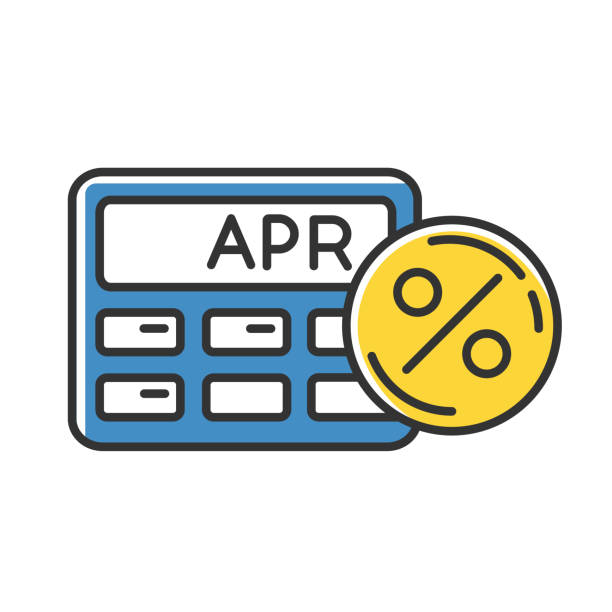APR, or Annual Percentage Rate, is a financial term that is often difficult for borrowers to understand. It essentially represents the actual cost of borrowing money, which is crucial to understand if you are taking any type of loan. In this article, we will explain APR in simple terms and discuss all its aspects in detail.
What is APR?

APR, or Annual Percentage Rate, is the rate that includes all fees and charges that you have to pay when taking a loan. This rate is for the entire year and includes not only the interest rate but also other costs. It’s important to understand because many people think that the interest rate and APR are the same, but they are different. APR takes into account several factors beyond the interest rate that better reflect the actual cost of borrowing.
Difference Between Interest Rate and APR
The interest rate is the amount you have to pay as a fee on the borrowed money. It is applied only to the principal amount of the loan. In contrast, APR includes this rate along with all the fees and charges that must be paid for the loan, such as processing fees, loan origination fees, etc. This is important because APR gives you a real idea of how much you will have to pay for your loan.
Calculating APR

Calculating APR can be a bit complicated, but it is essentially a mathematical formula that banks and financial institutions use. It combines the interest rate and all other fees and charges and then divides it annually. It is also important to note that APR can differ for each loan because the conditions for each loan are different.
Why is APR Important?
Understanding APR is essential because it gives you an accurate idea of the actual cost of borrowing. If you focus only on the interest rate, you may overlook necessary fees and charges that can significantly increase your total repayment. Therefore, whenever you take a loan, be sure to consider the APR so you can fully understand your borrowing decision.
APR and Personal Loans

APR for personal loans is generally quite high because these are unsecured loans. This means you do not need to provide collateral. This implies a higher risk for the lender, which they recover through the APR. Therefore, if you are taking a personal loan, pay attention to the APR and compare it to get the best deal.
Credit Cards and APR
The APR on credit cards is often high because they also involve unsecured borrowing. Here, you have to pay interest charges as well as annual fees, late fees, and balance transfer fees, which are included in the APR. It’s also essential to understand that each credit card has a different APR and often offers promotional rates that are only valid for a limited time.
APR and Mortgages
The APR for mortgages is generally not very high because these are secured loans. However, understanding the APR is still essential because it tells you the actual cost that you will have to pay for the entire duration of the loan. The mortgage APR includes interest, closing costs, origination fees, and other related charges, reflecting its actual cost.
Comparing APR
Comparing APR is an excellent way to understand different loans and decide which loan is most suitable for you. Often, people only look at the interest rate, but the APR gives you the complete picture. Whenever you take a loan, always check the APR and compare it with the APRs of other loans.
APR and Refinancing
The purpose of refinancing is often to reduce the cost of your loan. However, when refinancing, it is also important to understand the APR, because a lower interest rate does not necessarily mean you are benefiting. The APR includes all the costs of the new loan, which helps you make a better decision.
The Effect of APR on Your Credit Score
There is a direct relationship between APR and your credit score. The better your credit score, the lower your APR will be. This is because financial institutions consider you a low-risk customer and lend you money on more favorable terms. Therefore, maintaining your credit score is essential so you can get loans at lower APRs.
Fixed vs. Variable APR
There are two types of APR: fixed and variable. A fixed APR remains the same for the entire loan term, while a variable APR can change according to market conditions. It’s important to understand what type of APR your loan has, as it directly affects your future repayments.
The Impact of APR on Long-Term Financial Planning
By understanding APR, you can better achieve your long-term financial goals. If you know the APR on which you are taking a loan, you can plan your budget accordingly and avoid paying excessive interest and fees that could affect your savings in the long term.
Ways to Reduce APR
If you want to reduce your APR, there are some ways that can help you. First, improve your credit score because it directly affects your APR. Second, explore as many loan options as possible and compare their APRs. Third, take advantage of any promotional offers by understanding them well, but also read their terms and conditions carefully.
Benefits and Drawbacks of APR
The biggest advantage of APR is that it gives you the true cost of a loan. However, a drawback is that it varies for each type of loan and can sometimes be confusing. Many people face difficulties in understanding APR, which can lead them to make wrong decisions. Therefore, it is crucial to understand APR but also to understand all its aspects.
Final Thoughts: Understanding APR and Making the Best Financial Decision
Understanding APR is essential because it reveals the true cost of your loan. If you fully understand APR, you can select the best loan for yourself that can benefit you. Therefore, whenever you take any loan, make sure to consider the APR and make decisions according to your financial stability and plans.
Final Words
Understanding APR not only helps you accurately comprehend the true cost of borrowing but also ensures that your financial decision remains profitable for you in the long run. This article is intended to help you understand the importance of APR and all its aspects. Whenever you take any type of loan, be sure to consider the APR to maximize the benefits of your money.
